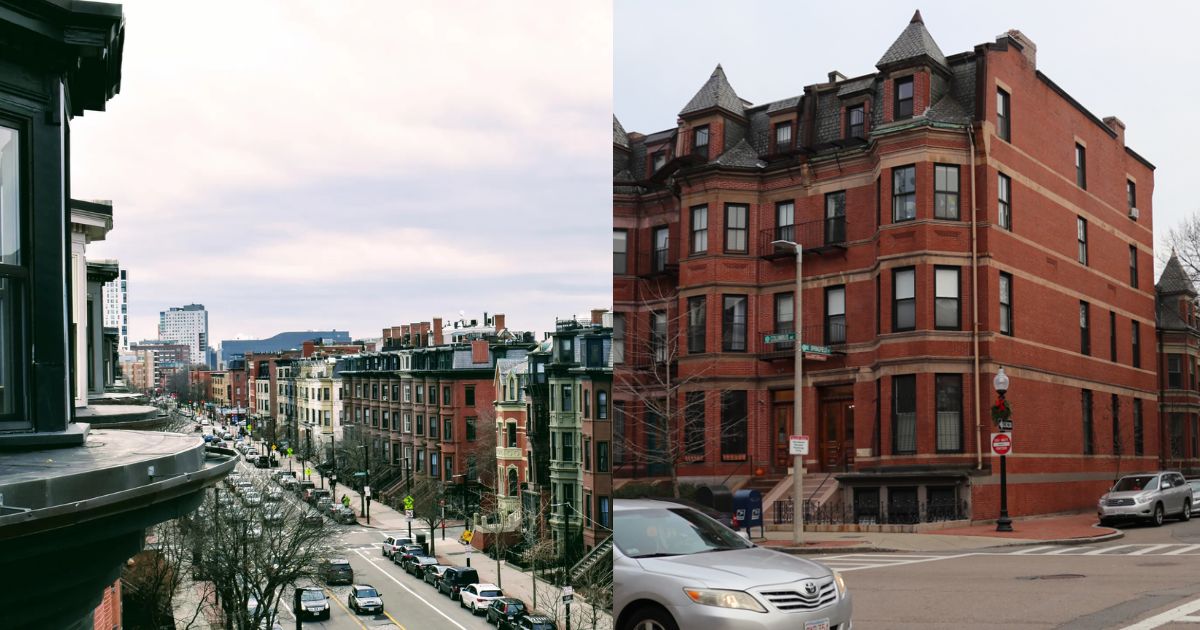Boston is a city rich in history, culture, and diverse neighborhoods, each with its own unique character and charm. However, for visitors and even some locals, there can be confusion between two areas: Southie (South Boston) and the South End.
While they share some similarities in name, these neighborhoods are distinct in their geography, atmosphere, and offerings.
In this comprehensive guide, we’ll explore the key differences between Southie and the South End, guiding you to a clearer understanding of where to find the iconic Boston neighborhood known as “Southie.”
Whether you’re a first-time visitor, a transplant to the city, or a curious local, this in-depth article will shed light on these two dynamic yet very different parts of Boston.
What Areas Are Considered Southie In Boston?
Southie, officially known as South Boston, is a neighborhood located just south of downtown Boston and east of the South End. Its boundaries stretch from the Fort Point Channel and Congress Street in the north, to Mt.
Vernon Street in the south. East to west, it extends from Boston Harbor to the Southeast Expressway (I-93) and the Boston Convention & Exposition Center.
Within this area of just under 2 square miles are several notable sub-neighborhoods that contribute to the overall character of Southie:
City Point: A small peninsula jutting out into the harbor, City Point is packed with residential homes, marinas, and a growing commercial district. The Boston Convention & Exhibition Center is located here, drawing many business travelers.
Fort Point: An up-and-coming area popular with artists, professionals, and students, Fort Point boasts trendy eateries, galleries, and loft-style housing. It borders Southie’s northern edge along Fort Point Channel.
West Broadway: Centered around the main drag of West Broadway, this section contains much of Southie’s traditional housing stock and Irish-American community roots. It is considered the residential heart of the neighborhood.
Other smaller areas like Telegraph Hill, East Side, and Marine Park make up the patchwork of Southie. But at its core, the neighborhood retains an unmistakable identity shaped by its history.
What Is Southie Known For?
While it has evolved over time, Southie is still known for its rich history and strong sense of community rooted firmly in its working-class immigrant past.
Proud Working-Class Roots
South Boston has long been home to families of Irish, Lithuanian, Polish, and other European descent who worked in shipbuilding, construction, and freight industries tied to the waterfront. Multi-generational families and lifelong residency helped cement an insular yet tightly-knit community here.
Even as gentrification and new development bring change, Southie retains a thick Boston accent and steadfast pride in its blue-collar roots. You’ll find remnants of its working-class heritage around every corner, from brick triple-deckers to the beloved L Street Bathhouse.
Fiercely Loyal Sense of Community
For many residents, Southie is more than a place – it’s a way of life. The neighborhood fosters a deep feeling of belonging and loyalty. Former Boston mayor Ray Flynn, a famous Southie son, once said:
“It’s the kind of place where, during the race riots, cabdrivers would ask, ‘Are you from Southie?’ If you were, they’d drive you for free. It’s a tough but caring place.”
This sense of unity transcends socioeconomic lines. It shows up everywhere, from cheering on the local sports teams at raucous block parties to saints’ feasts uniting neighbors in tradition.
A Resilient Spirit Forged in History
Like much of Boston, Southie has played a significant role in key historical events dating back to colonial times. Beyond the iconic Revolutionary War landmarks, sites around the neighborhood illuminate South Boston’s involvement in the Civil War, World Wars I & II, desegregation battles, and the infamous busing crisis.
The challenges faced by generations of immigrants and locals have helped create a fabric of resilience and pride, one now interwoven with a modern sensibility as the area’s fortunes rise again.
An Evolving Vibe: Old Meets New
Today, Southie’s character is an intriguing blend of old and new. Early 20th-century houses filled with longtime residents coexist alongside luxury new condos with views of the city skyline. Beloved stalwarts like Amrheins sit on quaint blocks with trendy farm-to-table restaurants and boutique hotels.
Life still revolves around the close-knit culture of the past, but with youthful energy and new perspectives injected into the mix. It’s a delicate balance that continues to shift – for better or worse depending on who you ask.
No matter the changes ahead, Southie will always be a place with strong maritime roots and unbreakable local bonds that transcend shifting demographics. That gritty individualism and blue-collar ethic is at the heart of this Boston neighborhood’s identity.
South “Southie” Boston vs. South End
With a clearer picture of what defines Southie, let’s contrast and compare it to the South End in more detail. Though they share part of their name, these Boston neighborhoods are quite distinct from each other.
Southie Boston

The Vibe
- Working-class Irish-American roots
- Tight-knit community feel
- Historical charm meets modern development
- A lively blend of generations old and new
- Relaxed, unpretentious, and proud of its character
Nightlife
- Welcoming neighborhood pubs and dive bars
- Up-and-coming brewery and craft cocktail scene
- Great seafood joints and classic Boston fare
- Lively patios and beer gardens in summer
- [List 2-3 other specific venues]
What To Visit
- Castle Island & Fort Independence
- Carson Beach
- Dorchester Heights National Historic Site
- [List 3-4 other top sites & attractions]
- Broadway, the main drag packed with shops and eateries
Where To Eat
- [List 4-5 well-known Southie dining spots like…]
- Amrheins Restaurant
- Sullivan’s at Castle Island
- Lincoln Tavern & Restaurant
- Local 149
South End Boston
The Vibe
- Fashionable and upscale; epicenter of high-end city living
- Predominance of Victorian brownstone homes
- Thriving arts scene and LGBTQ+ community
- Hip, cultured, and cosmopolitan vibe
- Beautiful tree-lined streets and parks
Nightlife
- Trendy cocktail bars, speakeasies, and dance clubs
- Lively restaurants popular with the professional crowd
- Performance venues like music halls, comedy clubs, drag shows
- [List 2-3 other specific venues like Wally’s Cafe]
What To Visit
- Boston Center for the Arts
- SoWa Art + Design District
- Calderwood Pavilion
- [List 2 other top attractions, gardens, galleries, etc.]
Where To Eat
- [List 4-5 acclaimed South End dining spots like…]
- Myers + Chang
- Toro
- The Beehive
- Orinoco: A Latin Kitchen
From this deeper look, it’s clear these adjoining areas have completely distinct personalities. While South Boston’s traditional working-class character still shines through, the South End’s polished affluence makes it feel worlds apart.
Southie Vs. South End Map
For a more visual depiction of where these neighborhoods sit in relation to each other, let’s take a look at their boundaries on a map
South End
The South End is a rectangular neighborhood running from Massachusetts Ave in the northwest to the Southeast Expressway (I-93) to the east. Its northern border is Columbus Ave/Melnea Cass Blvd and the southwestern edge follows the MBTA rail lines along Albany Street. Noted for its Victorian brownstones, the South End stretches from Chinatown to the Back Bay and South Boston neighborhoods.
South “Southie” Boston
South Boston’s official boundaries start at the Fort Point Channel and Northern Ave/Congress St to the north, spanning down to Mt. Vernon St to the meet the Dorchester line. From east to west it reaches from Boston Harbor and Castle Island across to I-93 and the Boston Convention & Exhibition Center. Key areas within Southie include City Point, Fort Point, D Street, and Telegraph Hill, among others.
As the maps show, while these neighborhoods are side-by-side, they maintain their own unique geographic footprints and borders. The lively city of Boston

A seasoned aviation enthusiast combines technical expertise with a conversational writing style offering readers an insightful and engaging journey through the interesting world of aviation and flights.











